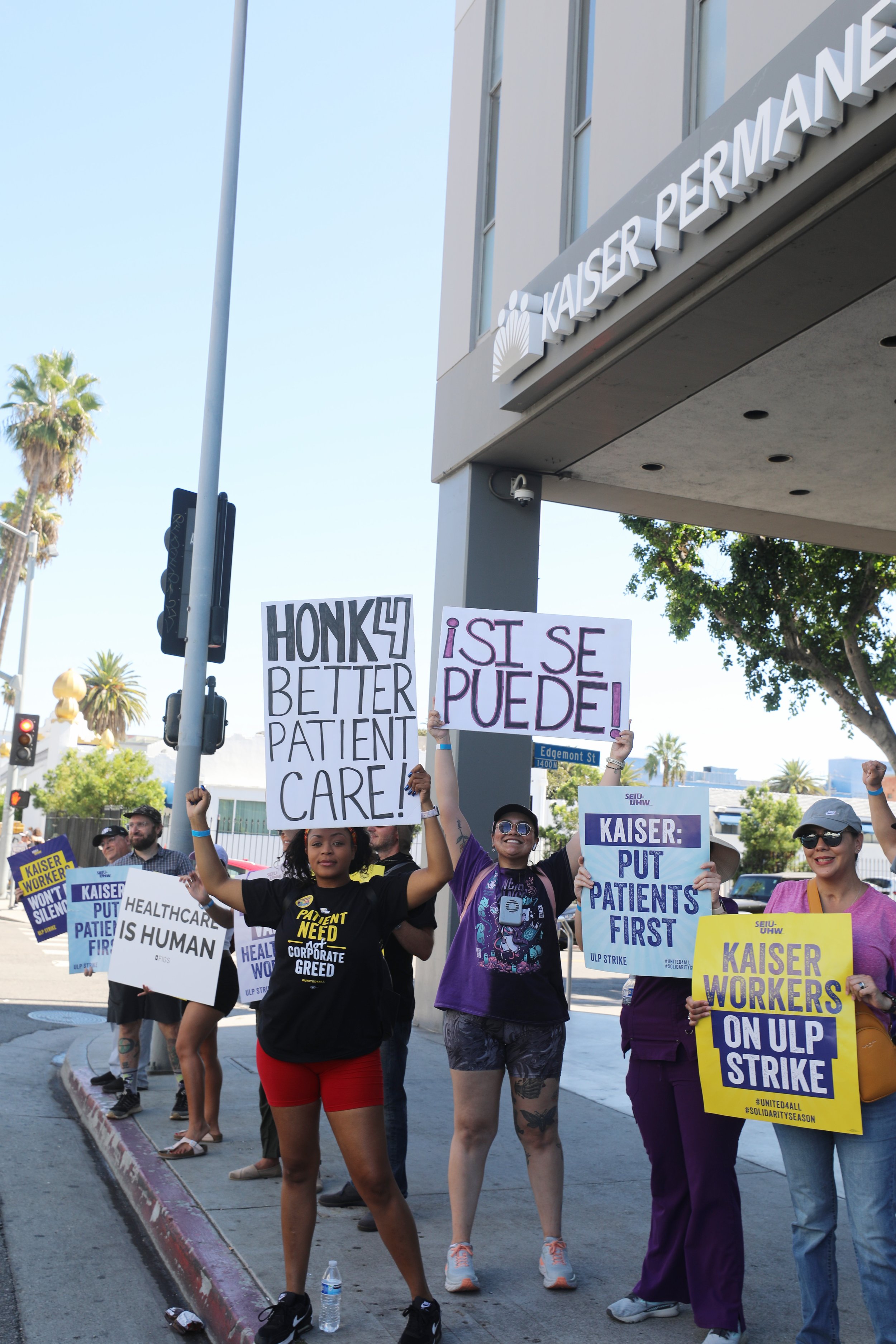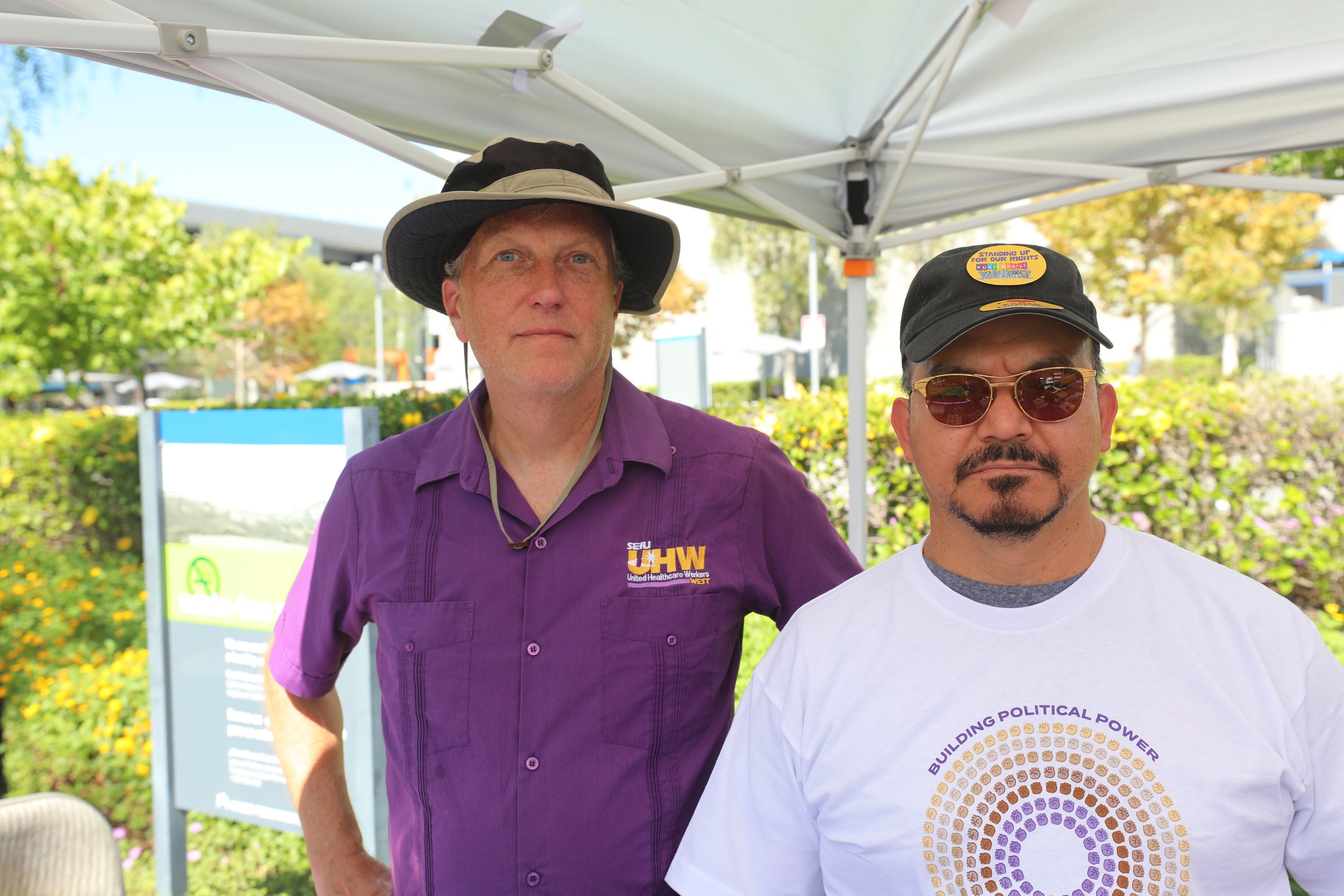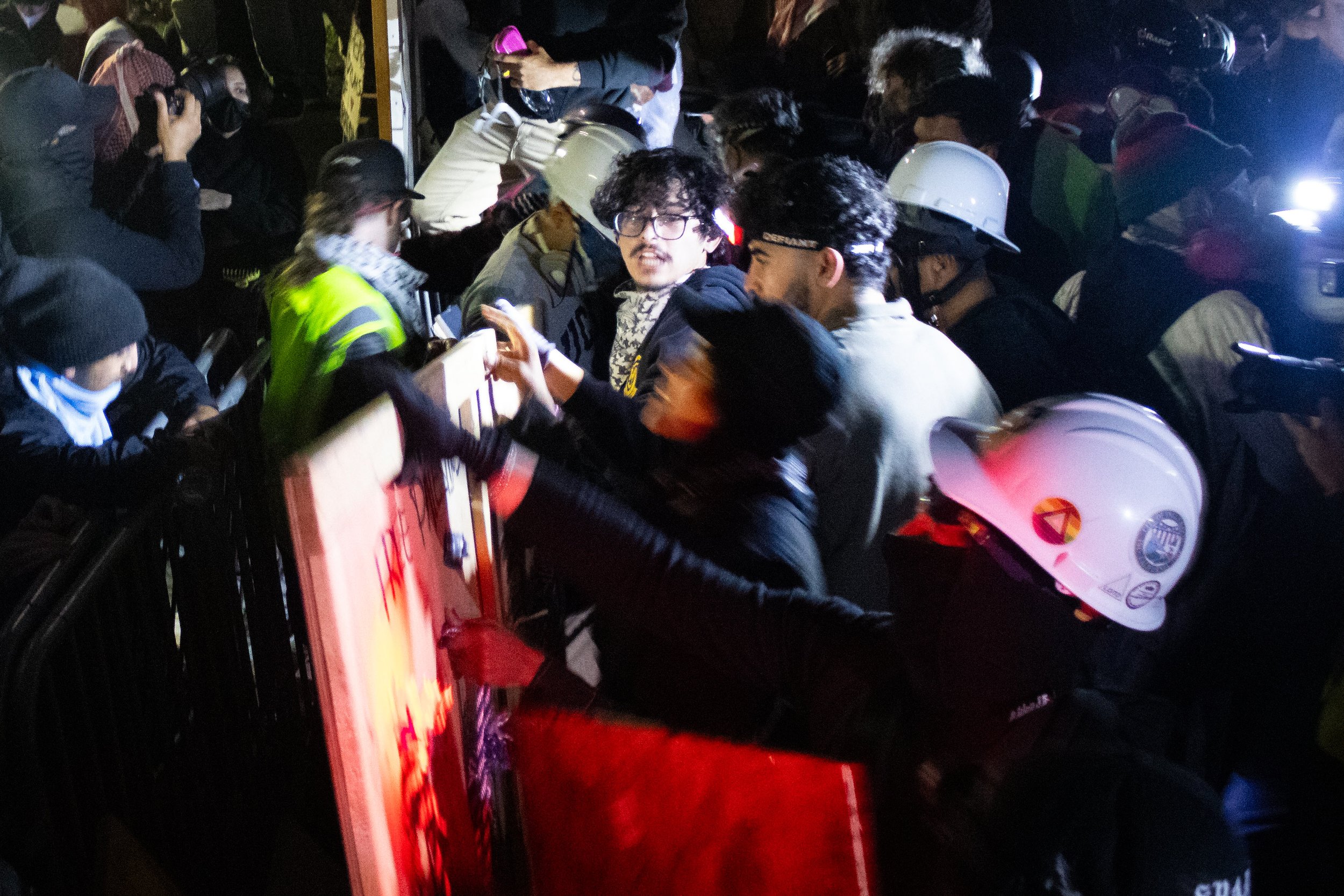Securing a Future in Healthcare for Patients
Renee Barlett-Webber | News Editor



The largest healthcare strike in U.S. history ends without an agreement.
Kaiser healthcare workers took to the streets on October 5 for a three-day strike, demanding wage increases, higher staffing levels and outsourcing limitations. After lengthy negotiations between the Coalition of Kaiser Permanente Unions and the hospital, strikers returned to work this week with no new contract.
SMC Nursing Professor Valerie Udeozor emphasized the importance of their struggles, not only for her students, but for the public. “Just because we're not as mainstream as maybe the actors and the writers, I would say it's even more important, because these are people who are going to take care of you after you have a baby, have surgery or get in a car accident.”
The strikers at Kaiser hospitals are represented by the Coalition of Kaiser Permanente Unions. These workers include technicians, nurse assistants, janitors and more. They are demanding wage increases, higher staffing levels and restrictions on outsourcing non-union labor.
The coalition of unions had originally asked for a 7% wage increase for the next four years and Kaiser came back with 3% across the board, which matched their last contract from 2019. Both parties have come closer to the middle, but the contract remains unresolved. Since 2018, these workers have received a cumulative 12% increase in wages while inflation has risen more than 20% in the U.S.
On Monday, 1,500 nurses and healthcare staff began a five-day strike with similar demands as Kaiser workers at four Los Angeles County hospitals, including St. Francis Medical Center, Centinela Hospital and Medical Center and Encino Hospital Medical Center.
According to a 2022 study by Definitive Healthcare, almost 334,000 healthcare workers left the industry in 2021. “Ever since the pandemic, we've been short-staffed,” said Armando Velasco, a Kaiser X-ray technologist of 36 years. He said the work that used to be done by 10 technicians is now done by five. “They can do better,” he added.
Despite its non-profit designation, Kaiser Permanente reported a $3.3 billion profit in the first six months of the year. CEO Gregory Adams received $15.6 million in compensation, with executives compensated up to $6 million in 2021, according to their 990 tax filing.
“Healthcare has now become a corporation where it used to be about the patients,” Velasco said. “Why would you come work for healthcare where you have exposure to infections – all kinds of nasty stuff – when you can go work at Burger King or Target and get paid almost the same, minimum wage, with no issues?”
Trujillo has an answer to this question. He said he joined the SMC nursing program because he likes taking care of people. “I realized it was where I belonged; kind of a calling. I tried to get into med school and then I became a nursing assistant. I realized nurses spend a lot more time with patients and that was more my personality.”
Udeozor said, “You have to have a passion for people and it has to be genuine. Now that being said, if you live in California, like these kinds of workers, you need some money.” She added that students need to have a healthy balance of passion and financial awareness.
Negotiations between Kaiser and the coalition of unions are continuing this week. If they do not reach an agreement soon, there will likely be more strikes in November with potentially even more workers whose contracts are ending.



